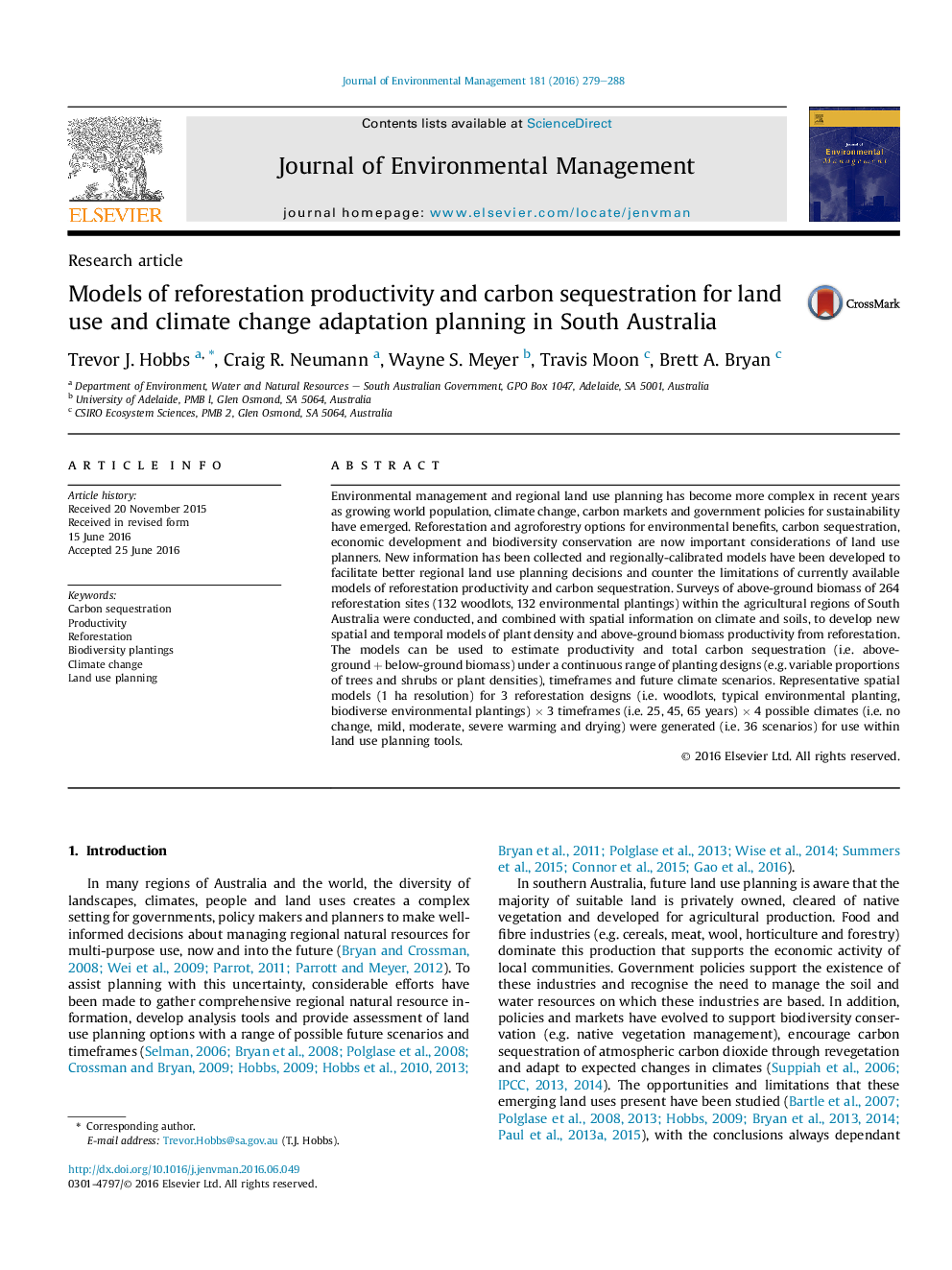| Article ID | Journal | Published Year | Pages | File Type |
|---|---|---|---|---|
| 7479597 | Journal of Environmental Management | 2016 | 10 Pages |
Abstract
Environmental management and regional land use planning has become more complex in recent years as growing world population, climate change, carbon markets and government policies for sustainability have emerged. Reforestation and agroforestry options for environmental benefits, carbon sequestration, economic development and biodiversity conservation are now important considerations of land use planners. New information has been collected and regionally-calibrated models have been developed to facilitate better regional land use planning decisions and counter the limitations of currently available models of reforestation productivity and carbon sequestration. Surveys of above-ground biomass of 264 reforestation sites (132 woodlots, 132 environmental plantings) within the agricultural regions of South Australia were conducted, and combined with spatial information on climate and soils, to develop new spatial and temporal models of plant density and above-ground biomass productivity from reforestation. The models can be used to estimate productivity and total carbon sequestration (i.e. above-ground + below-ground biomass) under a continuous range of planting designs (e.g. variable proportions of trees and shrubs or plant densities), timeframes and future climate scenarios. Representative spatial models (1 ha resolution) for 3 reforestation designs (i.e. woodlots, typical environmental planting, biodiverse environmental plantings) Ã 3 timeframes (i.e. 25, 45, 65 years) Ã 4 possible climates (i.e. no change, mild, moderate, severe warming and drying) were generated (i.e. 36 scenarios) for use within land use planning tools.
Related Topics
Physical Sciences and Engineering
Energy
Renewable Energy, Sustainability and the Environment
Authors
Trevor J. Hobbs, Craig R. Neumann, Wayne S. Meyer, Travis Moon, Brett A. Bryan,
